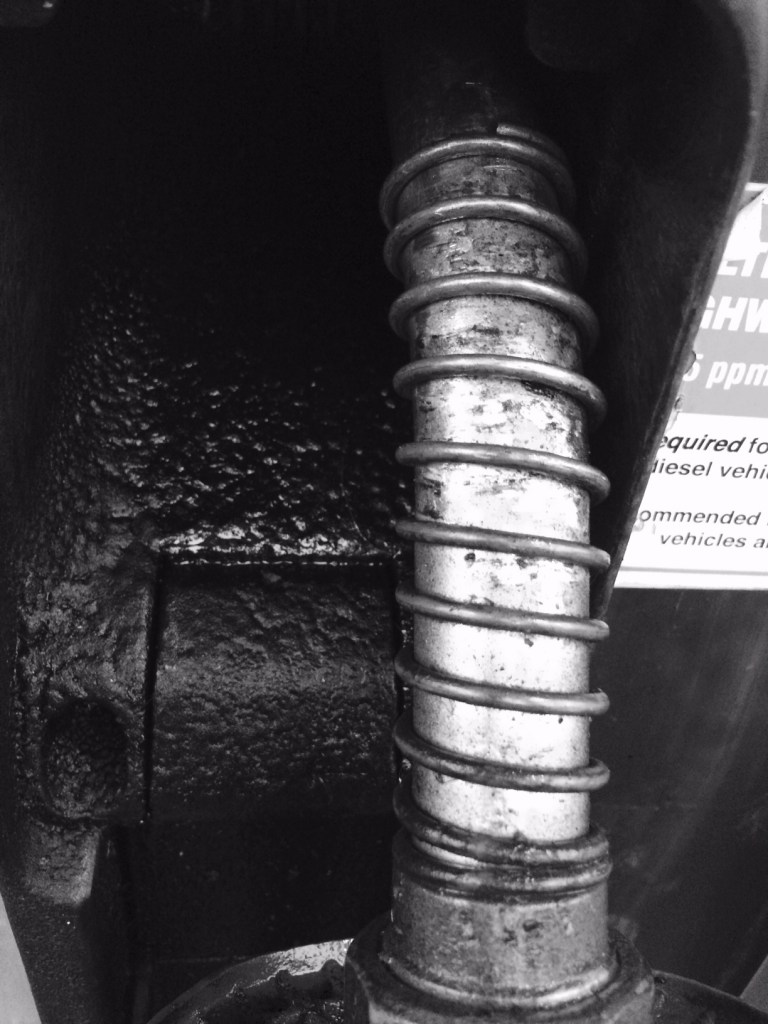
My wife’s coach recently made her chuckle while discussing her training. “You’ve got a diesel engine,” he told her. “We want to spread your speed and energy out over the whole race.”
That got me thinking about what kind of engine I have.
My top end as a runner was about 56 seconds for 400 meters. That explains why I never ran a 4:00 mile. Running four consecutive quarters at four seconds above your fastest pace is fairly hard. The only way to overcome that narrow gap between top end speed and sustainable pace is to repeat the ever living shit out of the sixty second pace and hope to build a sub-four out of that.

I once went through three-quarters of a mile in 3:09, which is sixty-three seconds per lap. Then I slowed the last lap, tightened up and finished in 4:19. I wasn’t quite there in terms of speed training for the full mile because my primary race was the steeplechase, a competition that required more strength than raw speed.
So my engine was like a four-cylinder running at top-end rather than a six or eight cylinder cruising along at speed.
It used to be believed that really fast engines like four-minute milers could not step up to run the 5000 or 10,000 meter distances with success, much less the marathon. But today’s world-class runners often can run a sub-four-minute mile and yet cash in that speed by running sub-13:00 for the 5k or even sub 27:00 for the 10k. Their speed enables them to run more efficiently at faster paces.
While training with a running club out in the Philly area, we did 800 repeats on the track and were nailing them in sub-2:15. That next summer I trained with a group at University of Illinois-Chicago and ran a sub 4:30 mile in practice. Those drills build confidence and callous the body to faster tempos and all-out speed.

Post-collegiately I ran only one or two competitive miles. One of them was a pickup meet where I literally coasted to the win at 4:22. That same season I raced a 5K and set my PR at 14:45. My PR in college for three miles was 14:45. So I’d improved by some thirty seconds at that distance.
So I wish that I’d raced a hard mile that summer because there was clearly a 4:12-4:15 in my legs and body. Alas that is a lament for the past.
But it showed that my four-cylinder engine had improved in running at the top end. My PR 10K that year was 31:10, a five mile at 24:47 and a four mile at 19:49. It was a fun year because whenever I raced there was a feeling of being able to push the gas pedal and the engine would roar into action.
That September I ran a 25K on a whim after training days of fifteen miles on Thursday, ten miles on Friday and another ten miles on Saturday. Obviously I was not planning to race that Sunday morning, but circumstances opened up and I jumped in the race and took third in 1:25, feeling relatively relaxed the entire way. That is the weekend I wished I’d raced a competitive marathon, without the 35 miles of training in advance. I’m pretty sure sub 2:25 was possible.
I once owned a stick-shift Subaru four-door Sedan with four cylinders. That car once got 450 miles to a tank of gas, and I think there were twelve gallons or so in a fillup. That always made me feel great, getting the most out of that car. I kind of feel the same way about my running body. And I’ll admit to shifting my stick knob a few times along the way.
